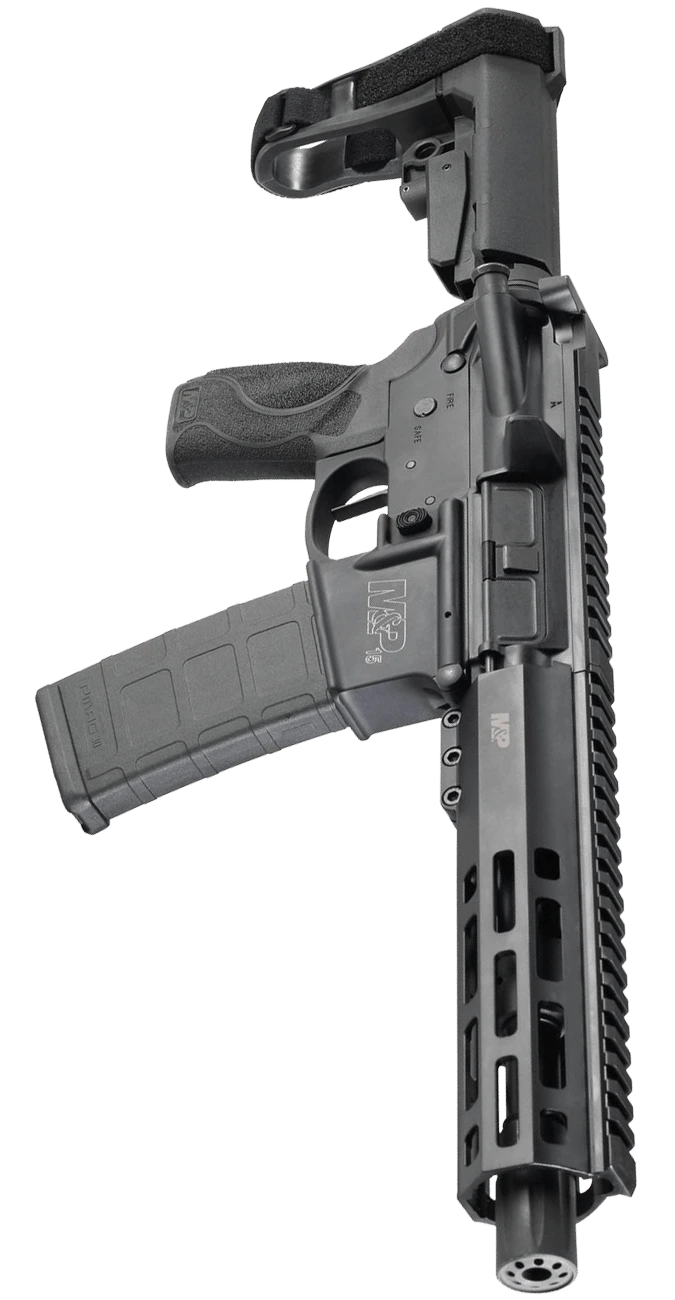All About FN 5.7 Ammo and Guns

It may be hard to imagine, but there was a time when the future of the iconic 9mm Luger cartridge was in jeopardy. In fact, that same desire to eliminate the 9mm gave birth to the 5.7x28mm cartridge.
Back in the late-1980s and early-1990s, NATO expressed desire to phase out the 9mm. They favored a new cartridge to be used in pistols and personal defense weapons, or PDWs. At that time, they were looking to replace the aging 9mm with something that offered better terminal ballistics and penetration of body armor.
FN Herstal responded by developing the 5.7x28mm, a bottleneck cartridge with a rebated rim, to meet the NATO specs and requirements of the day. While 5.7 ammo is similar in length to .22 Hornet and .22 WMR, the ammo was developed from scratch and does not have a parent case on which it was based.
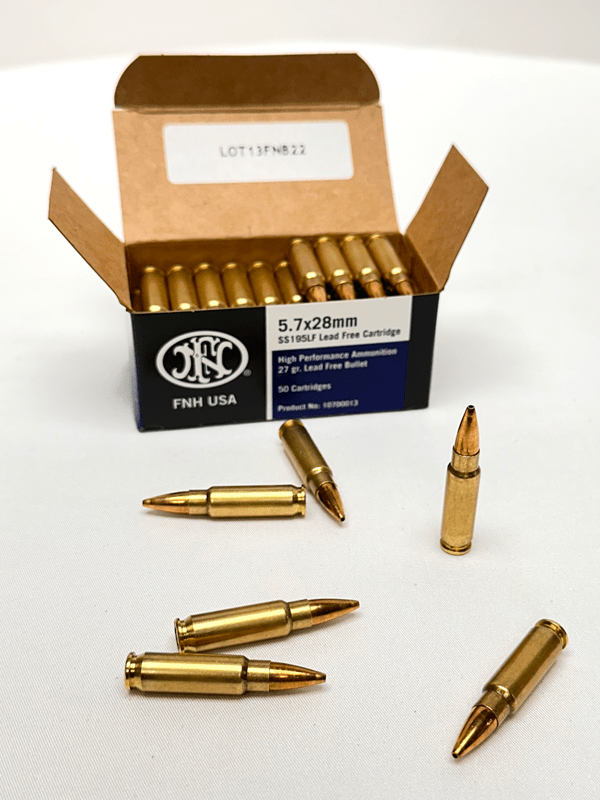
New ammo means sweet new guns. Development from the ground up of this new 5.7 ammo also required new firearms, and FN Herstal responded with two: the Five-seveN pistol and the P90 PDW.
However, FN Herstal wasn’t the only player in the ammo game. Heckler & Koch developed a 4.6x30mm cartridge to compete with FN’s 5.7x28mm cartridge. Early NATO tests in the 2000s of both cartridges resulted in the 5.7 barely coming out on top.
The final report said that the 5.7 ammo was “slightly superior in the field of terminal ballistics” compared to the 4.6. As a result, the 4.6 design was shelved in favor of the 5.7's ability to penetrate.

5.7 Ammo
As you would expect from a 5.7mm bullet, it doesn’t weigh much, but despite the light weight, it packs some serious punch. The original design featured a 23-grain plastic-core bullet that clocked in at a screaming 2,800 feet per second. Blazing muzzle velocity creates greater range accuracy and terminal performance.
This was discontinued in 1993 and replaced by a heavier 31-grain ammo that is moving at 2,350 feet per second. When fired from a P90, the 31-grain armor piercing variant can defeat a Level IIIA bulletproof vest out to a distance of 200 meters. When loaded with a 27-grain bullet, which is what FN’s factory 5.7 ammo uses, the 5.7 can reach speeds of up to 2,550 feet per second.
Subsonic 5.7 ammo is also available, loaded with a 62-grain bullet that clocks in at just 1,050 feet per second.
In 1993, the projectile’s length was shortened by 0.11” in an effort to standardize the ammo and make it easier to feed from the Five-seveN pistol that was in development at that time. It just made more sense to shorten 5.7 ammo across the board instead of having two different bullet lengths, one being optimized for the P90 and one for the Five-seveN.
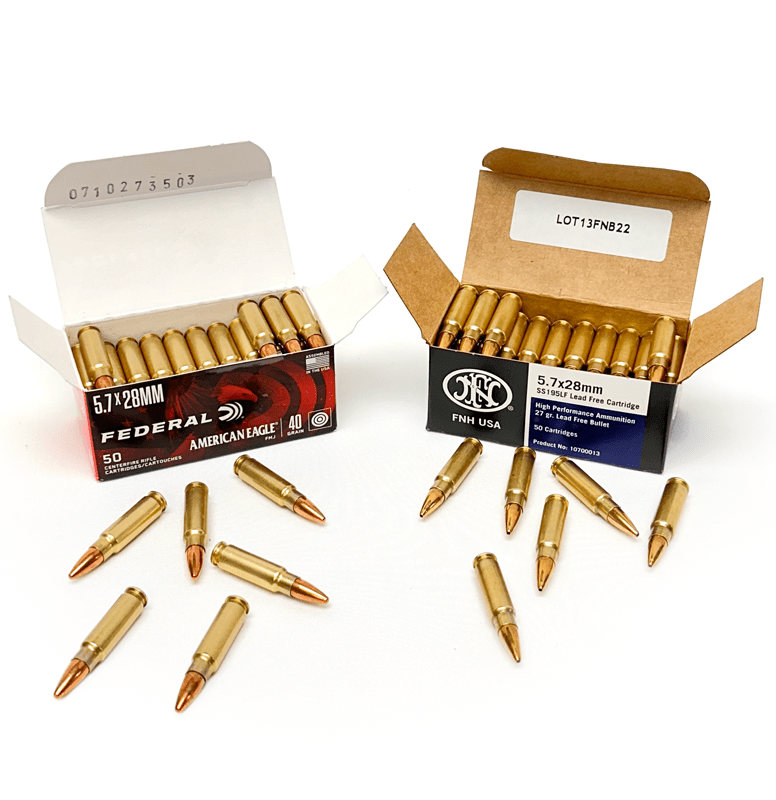
As of 2024, there are more than 40 different countries whose law enforcement, police, and military agencies all use at least one gun that is chambered in 5.7x28mm.
When compared to the performance of 9mm Luger ammo, the 5.7 blows it out of the water. Aside from the fact that 5.7 ammo produces about 30% less felt recoil, it also has a much flatter trajectory. With a 50-yard zero, a 9mm will drop by almost 30” at 200 yards. In comparison, a 5.7 will drop by just 2.5” at the same distance.
Cost, however, is where the 9mm wins out over the 5.7x28mm. The latter is considerably more expensive; we’re talking twice as much, at a minimum, and often more.
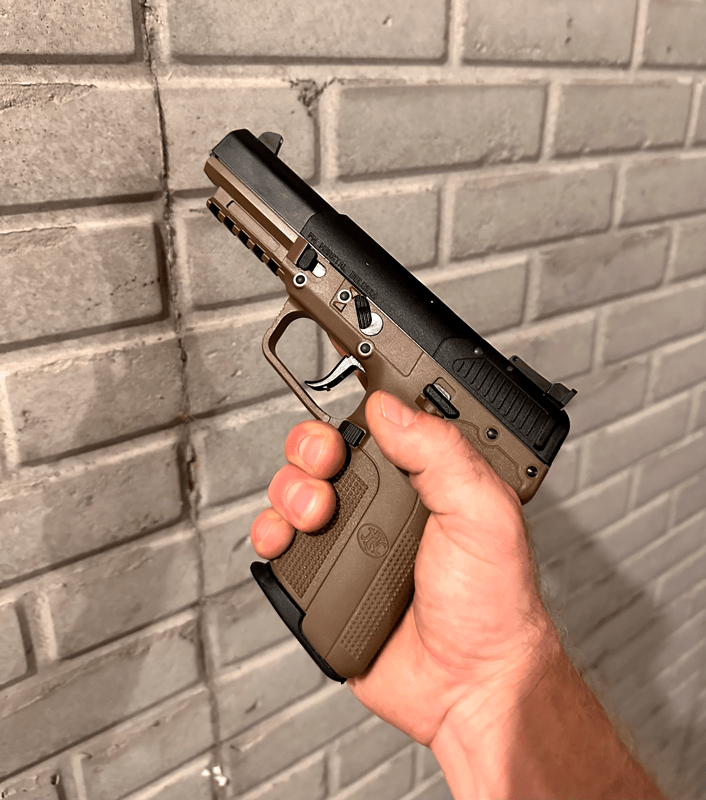
5.7 for Self Defense
There’s no middle of the road when it comes to opinions on the 5.7x28mm for self defense situations. People either love it or hate it with a passion. Proponents tout the large magazine capacity, which is a minimum of 20 rounds for all of the handguns on the market today.
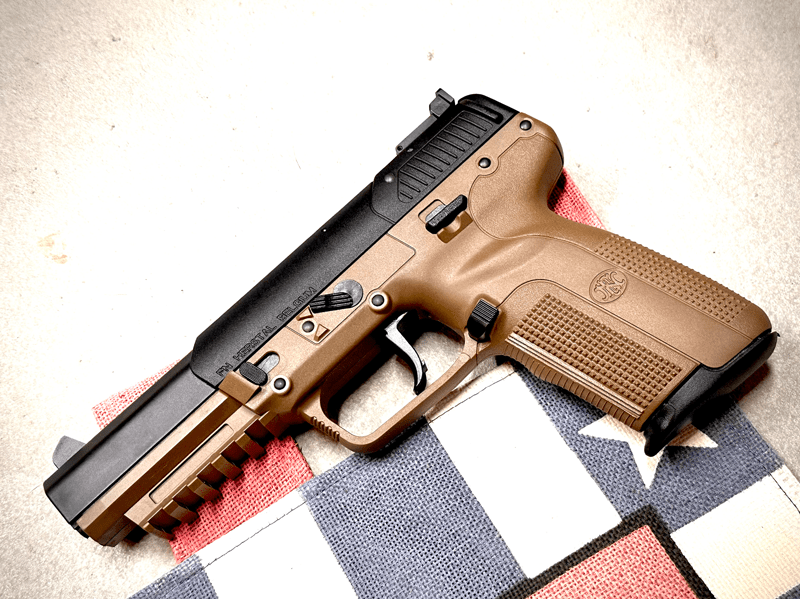
That makes it an industry leader in terms of capacity. However, the guns are all full-size firearms, meaning that they aren’t a viable option for concealment for everyone.
One of the biggest concerns brought up by the anti-gun crowd is that the 5.7 was designed to defeat body armor. While this is true, it’s important to know that FN is the only company that makes armor piercing 5.7 ammo, and the company does not sell it to civilians.
P90 PDW
FN’s P90 debuted in 1990 as a compact weapon built in a bullpup configuration to keep size down. The gun’s overall length was just 19.9” and it weighed 5.8 pounds. As a submachine gun, it fires from a closed bolt and has a straight blowback operation.
The 50-round detachable magazine mounts horizontally on top of the gun along the length of the receiver, which keeps the P90’s height down to 8.3” overall. The gun has a rate of fire of at least 850 rounds per minute, making the 50-round mags a necessity, as any smaller number would be insufficient given that rate of fire.
Vehicle crews, special forces, counter-terrorist groups, protective details, SWAT teams, the US Secret Service, and similar law enforcement agencies have all been known to use the gun, as its small size and big firepower makes it an obvious choice for the situations that those users often find themselves in.
PS90
Unfortunately, civilians can’t get their hands on P90 submachine guns, so the PS90 was created as a semi-automatic version in 2005. Aside from not being able to fire in full-auto, it is functionally the same gun as the P90 in all other aspects.
You can shoot the PS90 with the P90’s 50-round magazines or 30-round mags. For those who are unfortunate enough to reside in a freedom-hating state, you can also get 10-round magazines for the PS90.
While the PS90 transfers as a semi-automatic rifle, you could file paperwork with the ATF to cut down the barrel and make it into a short barrel rifle, or SBR, and then you’d have what is essentially a semi-auto P90.
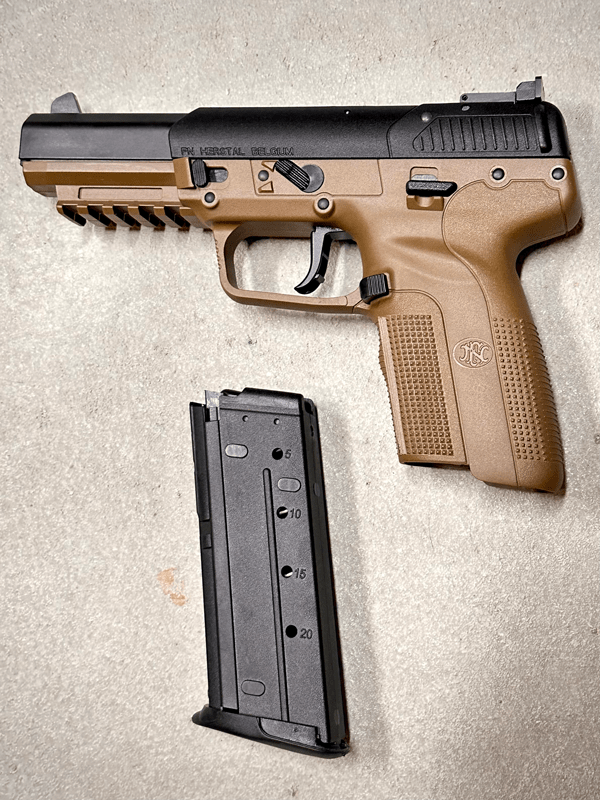
Five-seveN
Introduced in 1998, the FN Five-seveN was initially restricted to just military and law enforcement customers. In 2004, however, those restrictions were lifted and the gun has been available on the civilian market for 20 years now.
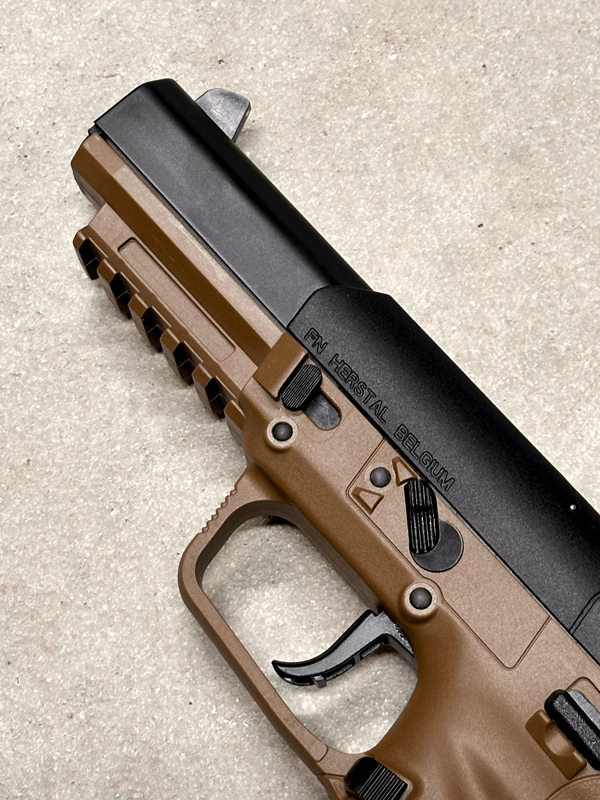
Designed to be a full-size handgun, the Five-seveN has the same grip angle as the M1911. It has a 4.8” barrel, is 8.2” in overall length, and weighs 1.6 pounds when fully loaded. The gun is made with a polymer frame and while the slide appears to be made of polymer as well, it’s actually made of steel that’s been encased in polymer.
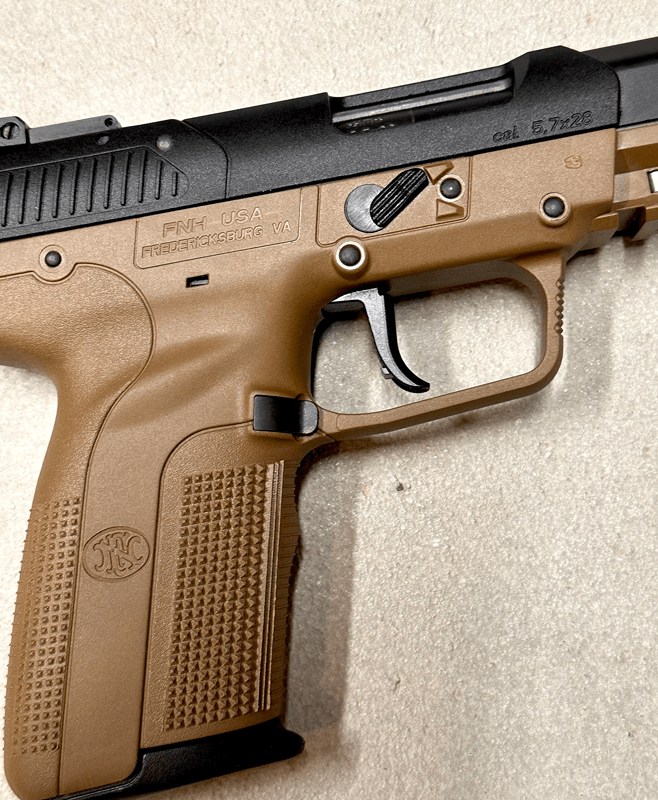
A standard capacity magazine for the Five-seveN holds 20 rounds, but you can also purchase 10-round or 30-round magazines.
Other 5.7 Firearms
For quite some time, the FN Five-seveN was the only pistol chambered in 5.7x28mm. In recent years, more companies have begun adding 5.7 guns to their lineup. The Ruger-5.7 was introduced in 2019; Palmetto State Armory debuted their 5.7 Rock in 2022; Smith & Wesson launched the M&P 5.7 in 2023. Standard magazine capacity for these pistols is 20 rounds, 23 rounds, and 22 rounds, respectively.
Less conventional 5.7 pistols exist, too. CMMG offers their Banshee, which is an AR pistol, and their Dissent, which is a bufferless AR pistol, in 5.7x28mm. The Kel-Tec P50 and Ruger LC Charger are both chambered for the 5.7x28mm cartridge.
If you’d prefer to go the long gun route, you can get the CMMG Resolute, Kel-Tec R50, and Ruger LC Carbine all chambered for the 5.7x28mm as well.
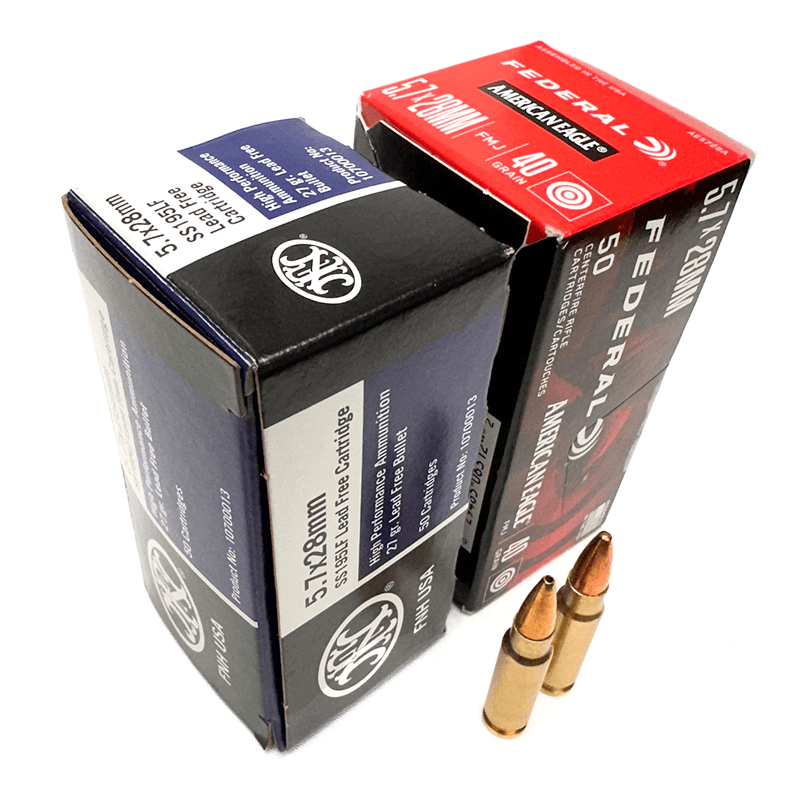
The Choice is Yours!
So, is the 5.7 really a practical round for self defense handguns? Are the guns chambered for it practical either? Yes, the FN 5.7 is a practical round but not everything has to serve a purpose.
If you want to carry a gun chambered for 5.7 ammo for self defense, go for it. If you’re just looking for something fun to shoot on the range, do it. Everyone has an opinion, and you know what they say about opinions, right?
